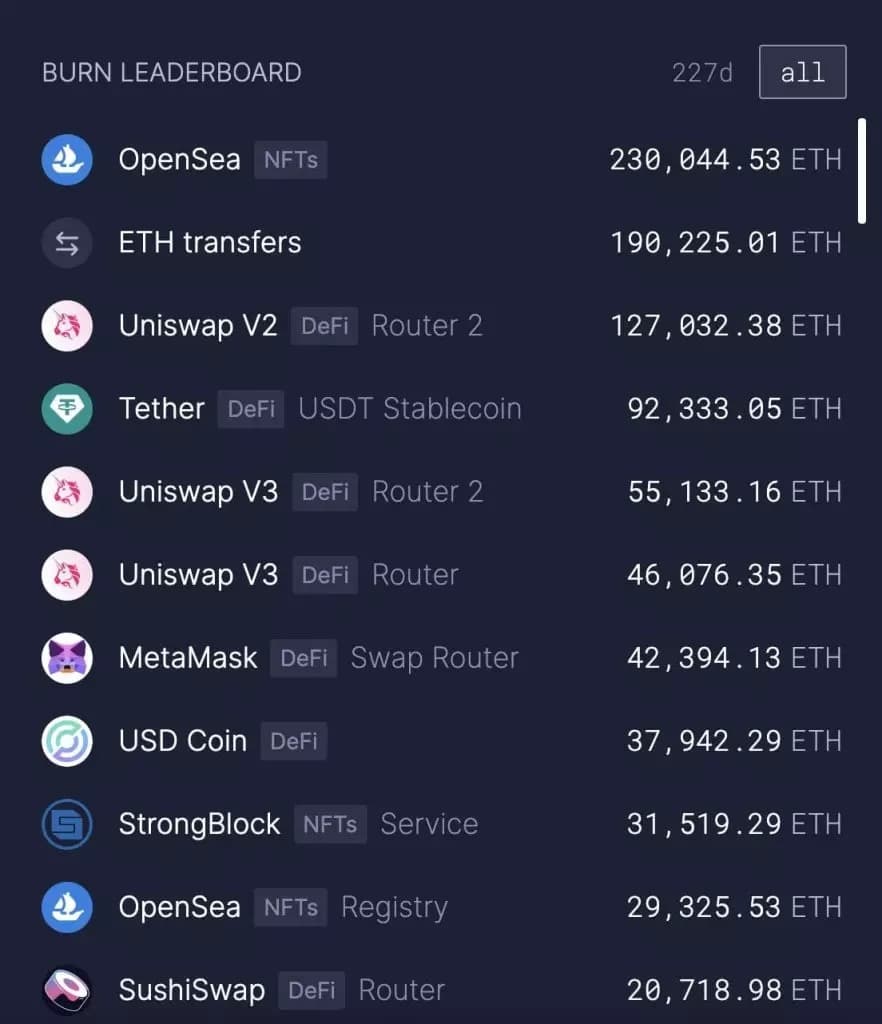In August 2021, a new “burn” mechanism was introduced on Ethereum during the EIP-1559 update, allowing ETH to become deflationary. Since then, 2 million Ethers have been taken out of circulation, the equivalent of $5.8 billion.
More than $5.8 billion of Ether burned
The EIP-1559 update is one of the most important updates to the Ethereum network. As a reminder, it introduces a mechanism to “burn” a portion of the ETH spent on transaction fees, in a bid to impose a deflationary character on the token.
In theory, the update was intended to reduce and stabilise mining and transaction fees. That said, although they are currently at their lowest in over 6 months, there is no guarantee that the EIP-1559 has anything to do with it.
Above all, this new burn mechanism has had a major role in reducing the total supply of Ether. In total, over 2 million ETH have been completely withdrawn from circulation, according to data published on Ultrasound.money. On average, the current rate is about 6 tokens burned per minute, or 100,000 per week.
NFTs dominate the Ethereum network
In particular, OpenSea is responsible for the majority of Ether burns. In fact, the NFT buying platform is responsible for about 11.5% of the transactions on the Ethereum network. Here are the top ten contributors:

OpenSea, top source of Ether token burn
In fact, the non-fungible token category accounts for 35% of tokens burned since the implementation of the update. It is important to note that Uniswap is in third, fifth and sixth place in this ranking. The v2 and v3 versions of the decentralised exchange (DEX) account for approximately 11% of the ETH burned since the update.
Ethereum merge is fast approaching
It’s no longer news, Ethereum is working on transitioning its current Proof-Of-Work (PoW) consensus model to a Proof-Of-Stake (PoS) model. This highly anticipated merge is expected to take place in July this year.
The Ethereum Foundation has announced the launch of the Kiln testnet, the final step before Ethereum 2.0. This involves merging the Beacon chain with the current core network. Currently, the Kiln testnet is the final step before the merge to Ethereum 2.0.
This transition should help Ethereum consolidate its current status as the leading blockchain in terms of total locked value. Indeed, the merge would result in greater scalability and lower transaction costs. It would also help the network to reduce its energy consumption to about 1% of the energy it currently consumes.
